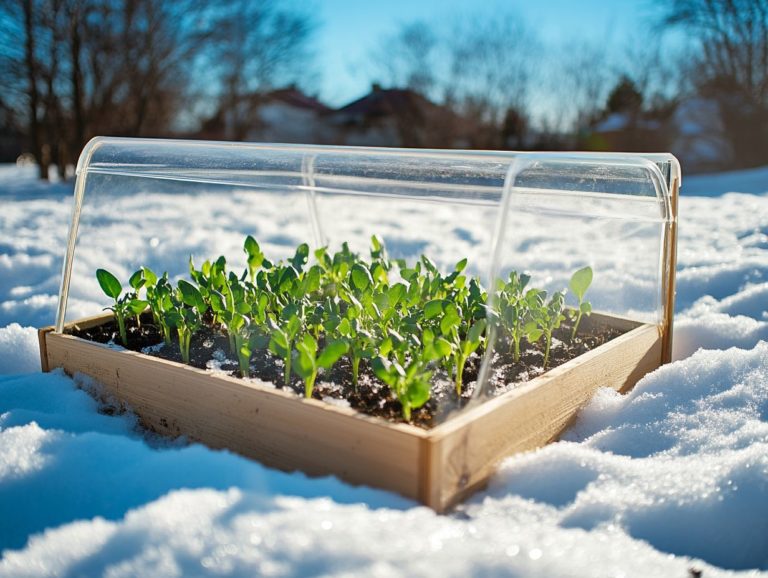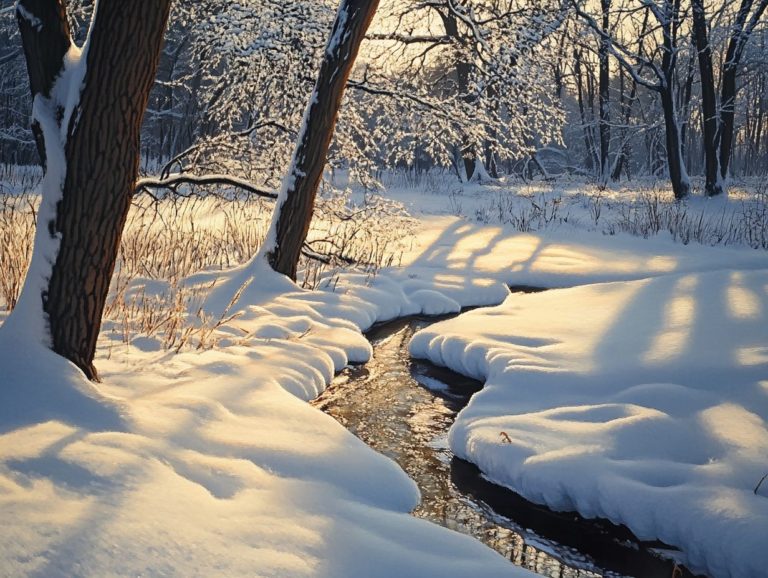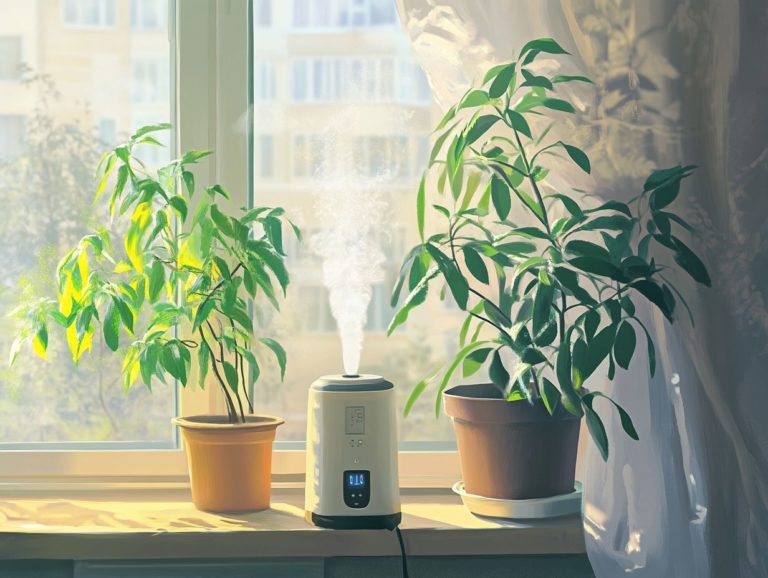Improving Soil Drainage for Winter Gardening
Winter gardening brings a distinct set of challenges. One critical factor for your success lies in managing soil drainage. Proper drainage safeguards your plants from waterlogged conditions and fosters healthy root development during the colder months.
This article delves into the significance of soil drainage. It helps you identify the telltale signs of poor drainage and offers effective strategies to enhance it.
You’ll also discover plant varieties that thrive in less-than-ideal conditions. Plus, there are maintenance tips to keep your winter garden flourishing.
Explore these insights to ensure your winter gardening endeavors result in a breathtaking display of growth and beauty!
Contents
- Key Takeaways:
- The Importance of Soil Drainage for Winter Gardening
- Signs of Poor Soil Drainage
- Methods for Improving Soil Drainage
- Best Plants for Poorly Drained Soil
- Maintaining Soil Drainage in Winter Gardens
- Frequently Asked Questions
- 1. How can I improve soil drainage for winter gardening?
- 2. Can I use any type of organic matter to improve soil drainage for winter gardening?
- 3. How often should I add organic matter to my soil for better drainage?
- 4. Are there specific plants that need better soil drainage for winter gardening?
- 5. Can I use raised beds to improve soil drainage for winter gardening?
- 6. What should I do if my soil is still not draining well after adding organic matter?
Key Takeaways:

- Good soil drainage is crucial for successful winter gardening. Excess water can lead to root rot and other issues.
- Signs of poor soil drainage include waterlogged soil, slow drainage, and stunted plant growth. You can address these issues by adding organic matter, creating raised beds, or installing drainage systems.
- Plants that thrive in wet conditions, such as winter vegetables and perennials, are ideal for poorly drained soil in winter gardens. Regular maintenance, like mulching and proper watering, can also help maintain healthy soil drainage throughout the year.
The Importance of Soil Drainage for Winter Gardening
Soil drainage is essential for your winter gardening efforts. Understanding soil needs for winter vegetables significantly impacts the health and vitality of your plants during the colder months.
Effective soil drainage helps you manage excess water. It prevents waterlogging and creates a thriving environment for organic matter, like well-rotted manure and nutrient-rich compost.
Maintaining soil quality is essential for a flourishing garden! This is particularly vital in areas with heavy clay soil. By prioritizing improvements in soil drainage, you create conditions that enhance plant growth and support the broader ecosystems that depend on your garden’s health.
Why Good Drainage is Essential for Winter Gardens
Good drainage is crucial for your winter garden. It ensures moisture retention without the risk of waterlogging, which can compromise soil health and the survival of your plants.
Effective drainage allows excess water to escape and helps maintain the right moisture levels essential for plant growth.
When water drains properly, it prevents adverse conditions like soil compaction. Soil compaction occurs when the soil becomes too packed, making it hard for roots to grow.
Well-drained soil creates a balanced ecosystem. This promotes tiny organisms in the soil that help plants and enhances overall plant health.
In winter gardens, this balance is particularly important. The root systems of hardy plants need consistent moisture without the threat of frost damage or root rot.
This ultimately supports vibrant blooms and a thriving garden as spring arrives.
Signs of Poor Soil Drainage
Recognizing the signs of poor soil drainage is essential for you as a gardener. Waterlogged conditions can create considerable stress for your plants and undermine the integrity of the soil structure.
Identifying and Addressing Drainage Issues
Addressing drainage issues in your garden starts with identifying the symptoms of waterlogging. It’s important to understand its detrimental effects on soil structure and overall quality.
Waterlogged soil can unleash a slew of problems, such as root rot and stunted plant growth. When excessive moisture takes over, it displaces the air in the soil, making it difficult for roots to access the oxygen they need.
These drainage challenges pose a serious threat to your plants. Act now to protect them!
Amending your soil with organic matter, like compost, can significantly enhance drainage. It boosts soil fertility at the same time.
Consider creating contour beds or installing trench drains to channel excess water away from vulnerable areas in your garden.
Introducing earthworms into your soil can also be transformative. Their natural tunneling improves aeration and fosters a healthier soil structure, cultivating a balanced ecosystem that supports thriving plants.
Methods for Improving Soil Drainage
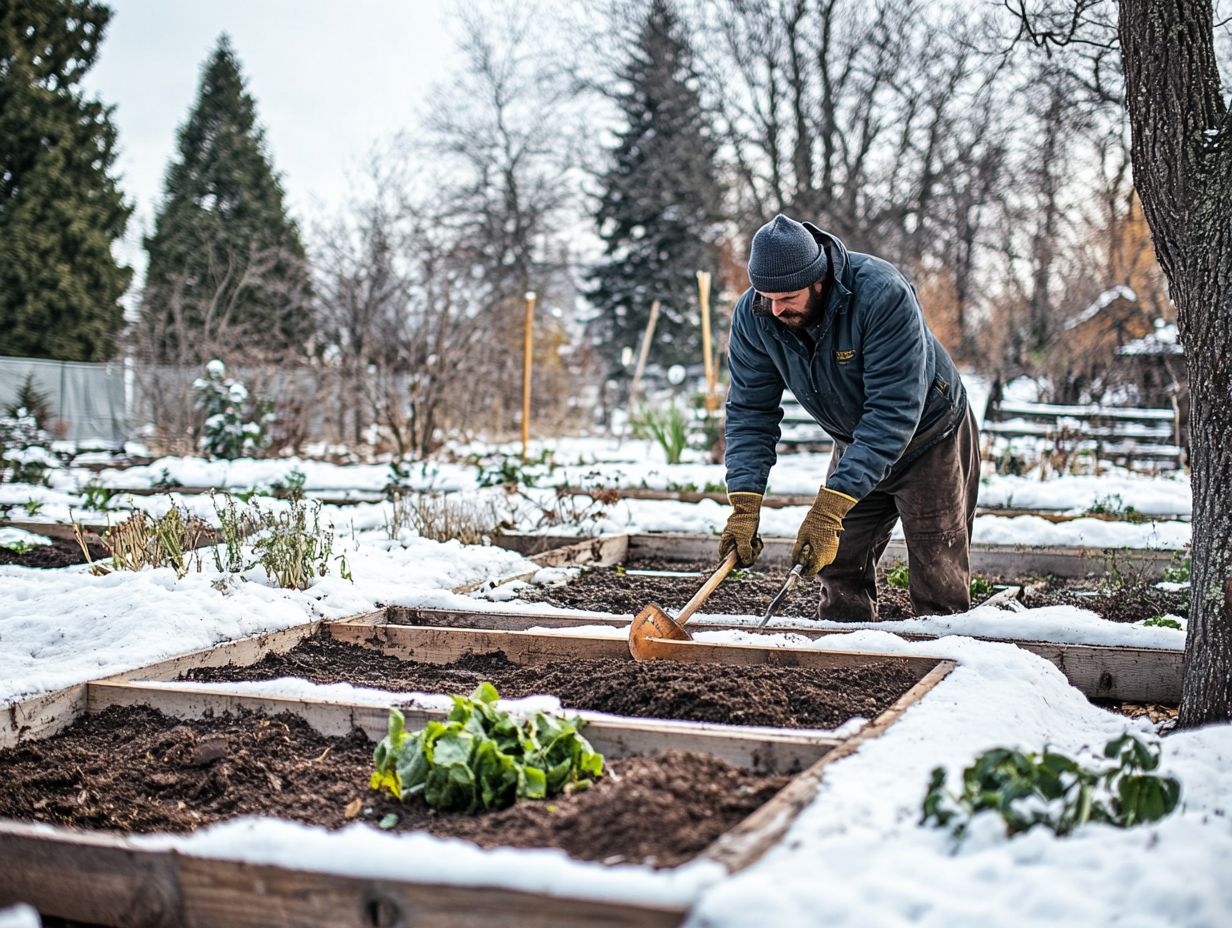
Improving soil drainage is essential for cultivating a flourishing garden, especially when dealing with heavy clay soil.
You can achieve this through various effective methods, such as incorporating organic matter to enhance soil structure and installing drainage systems to facilitate water movement.
Amending Soil with Organic Matter
Amending your soil with organic matter, such as well-rotted manure and leaf mold, can significantly improve drainage and foster a healthier soil ecosystem.
Incorporating a variety of organic materials like compost, grass clippings, and straw not only enhances soil structure but also increases its capacity to hold nutrients.
These natural amendments promote better airflow and water retention, creating an environment conducive to robust root growth while reducing compaction. Organic mulches suppress weeds and lower soil temperatures, establishing an ideal habitat for beneficial microorganisms.
Over time, these practices will cultivate vibrant, living soil that supports a diverse array of plants, allowing your gardens and landscapes to thrive.
Creating Raised Beds
Creating raised beds is a game-changer for gardeners! This practice significantly enhances drainage and improves soil quality, especially in areas plagued by heavy clay soil.
These elevated plots allow for superior water management, preventing the soil from becoming waterlogged while facilitating essential aeration.
By raising the planting area, you can easily amend the soil with organic matter like compost, leading to nutrient-rich conditions vital for vibrant plant growth.
Constructing raised beds is straightforward; they can be made from various materials including wood, stone, or even recycled materials, tailored to fit your unique garden space.
This method improves drainage and helps you manage weeds and pests more effectively, creating an ideal environment for crops, flowers, and herbs to flourish.
Installing Drainage Systems
Installing efficient drainage systems is vital for your garden s water management. It ensures that excess water is diverted away, helping to maintain soil health.
You have various drainage options available, including surface drains, subsurface drains, and French drains.
Surface drains are open channels that effectively manage runoff water.
Subsurface drains involve buried pipes that transport excess moisture away from the root zone. French drains, with their perforated pipes surrounded by gravel, excel at redirecting water away from critical areas.
The installation methods can vary based on the system you choose, but they generally require careful planning to ensure proper grading and outlet placement.
Implementing these drainage solutions significantly reduces the risk of soil erosion, safeguarding your garden’s structure and creating optimal conditions for plant growth.
Best Plants for Poorly Drained Soil
Choosing the right plants for poorly drained soil can greatly enhance your garden’s productivity.
By selecting species that flourish in wet conditions, you not only improve the vitality of your garden but also elevate the overall quality of the soil.
Types of Plants that Thrive in Wet Conditions
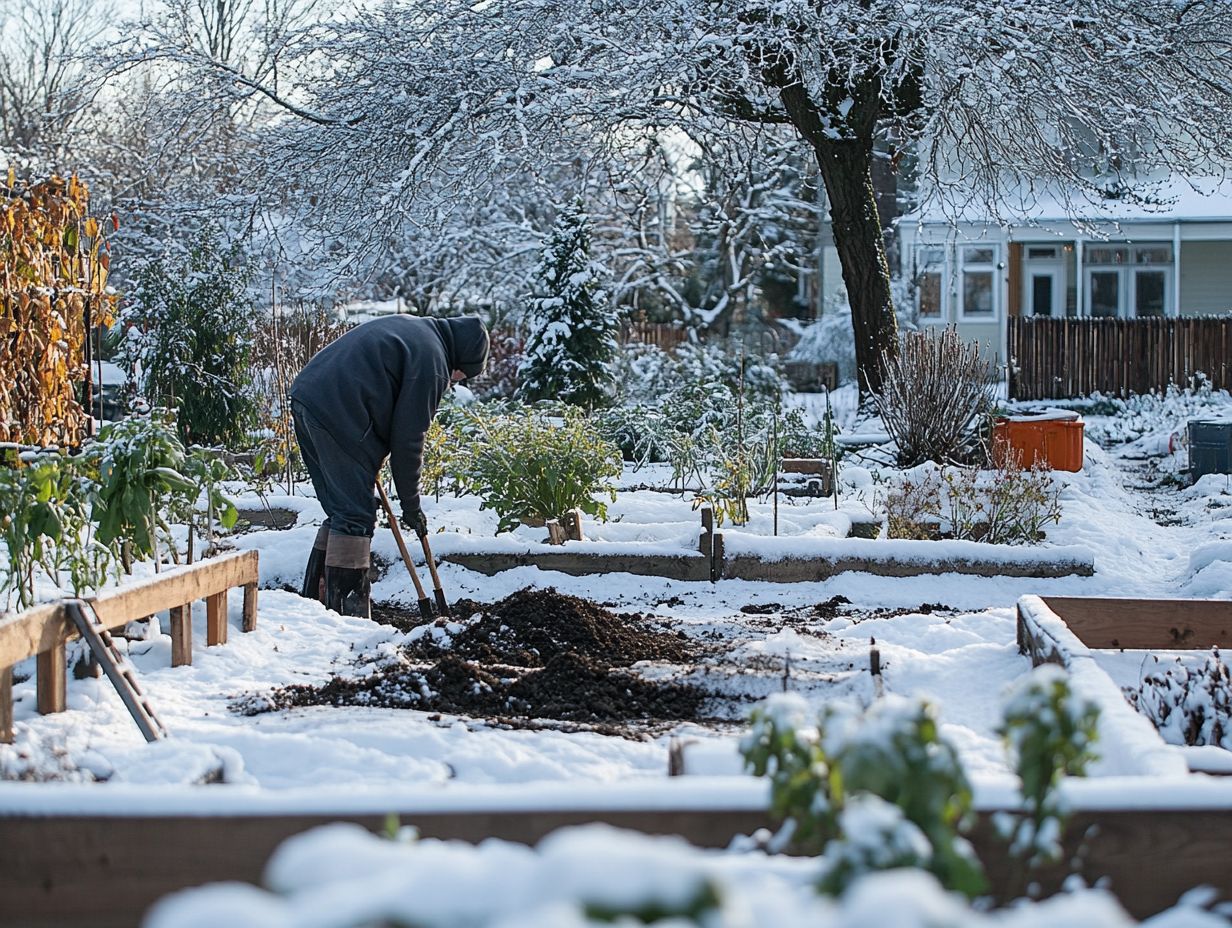
Moisture-loving plants play a crucial role in maintaining biodiversity in wet conditions and significantly contribute to soil health.
Consider incorporating varieties like cattails, ferns, and native perennials.
Choose species that thrive in partial to full shade, such as astilbes and hostas, to elevate the aesthetic charm of your garden.
These plants foster habitats supporting wildlife, including pollinators and amphibians.
When integrating these plants into your garden, focus on their ability to thrive in wet conditions, ensuring they flourish in areas with poor drainage or standing water.
Techniques like rain gardens are effective, allowing you to manage water efficiently while nurturing a vibrant ecosystem.
Maintaining Soil Drainage in Winter Gardens
Maintaining soil drainage in your winter garden requires consistent attention and a strategic approach. Techniques like applying mulch and incorporating cover crops help preserve soil quality and prevent erosion, especially when understanding soil drainage needs in cold climates.
With a little effort, you can create a vibrant winter garden!
Year-Round Strategies for Healthy Drainage
Implementing year-round strategies for healthy drainage is essential for nurturing thriving ecosystems and ensuring healthy soil in your garden.
This approach enhances plant vitality and reduces the risk of waterlogging or soil erosion, both of which can hinder growth. You can use straightforward techniques like building raised beds or adding organic matter to improve soil structure and enhance drainage.
By introducing plants that naturally flourish in wet conditions, you can establish a balanced moisture level, ensuring other plants receive the hydration they need. Consistent care, paired with sustainable practices like changing the types of plants you grow each year and mulching, creates an environment that supports your garden’s plants and the surrounding ecosystem.
Frequently Asked Questions
1. How can I improve soil drainage for winter gardening?
One way to improve soil drainage for winter gardening is by adding organic matter such as compost or aged manure. This helps loosen compacted soil and creates air pockets for better drainage, as outlined in our guide on improving soil structure for cold-weather gardens.
2. Can I use any type of organic matter to improve soil drainage for winter gardening?
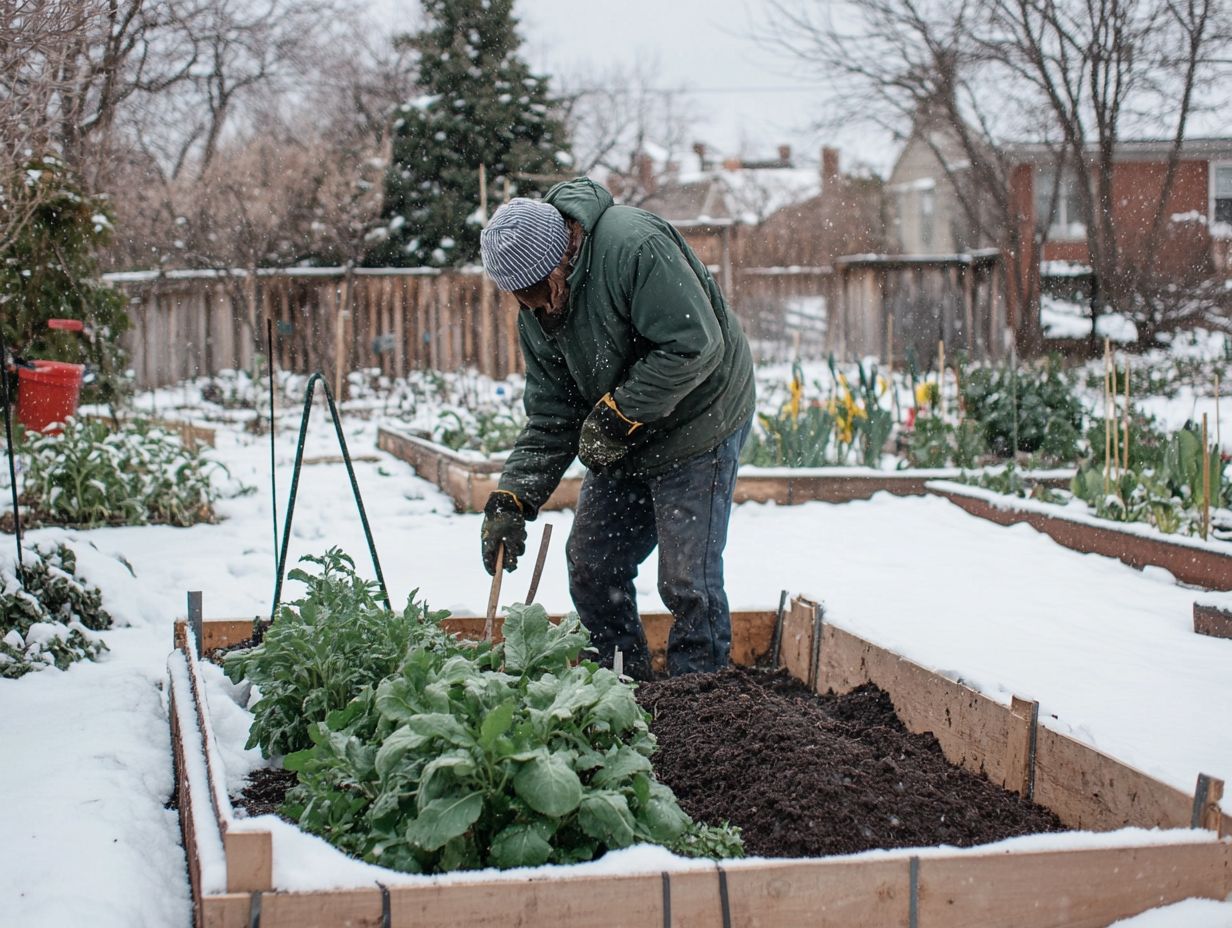
Yes, you can use various types of organic matter, including compost, aged manure, shredded leaves, or grass clippings. Ensure that it is well-aged and free from chemicals or pesticides.
3. How often should I add organic matter to my soil for better drainage?
Add organic matter to your soil at least once a year, preferably in the fall before winter gardening. This gives the organic matter time to break down and improve drainage before the colder months.
4. Are there specific plants that need better soil drainage for winter gardening?
Yes, certain plants are more sensitive to waterlogging and require better drainage. These include winter vegetables like broccoli, cauliflower, and cabbage, as well as winter flowers like pansies and snapdragons.
5. Can I use raised beds to improve soil drainage for winter gardening?
Yes, raised beds are a great solution for improving soil drainage. They allow for better air circulation, drainage, and prevent waterlogged soil from damaging your plants’ roots.
6. What should I do if my soil is still not draining well after adding organic matter?
If your soil still doesn t drain well after adding organic matter, consider other solutions like installing drainage pipes or creating a drainage ditch. Ensure your garden isn t in a low-lying area where water tends to collect.

